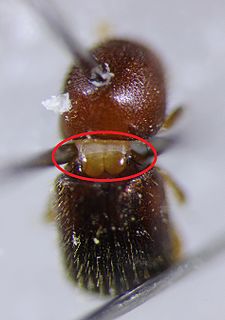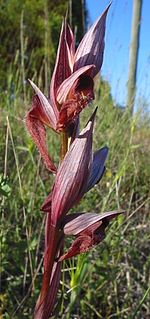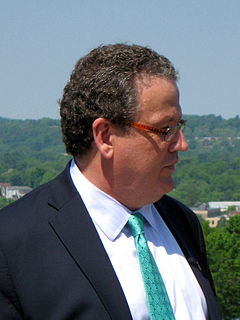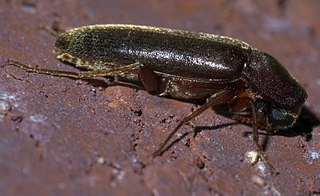Binomial nomenclature, also called binominal nomenclature or binary nomenclature, is a formal system of naming species of living things by giving each a name composed of two parts, both of which use Latin grammatical forms, although they can be based on words from other languages. Such a name is called a binomial name, a binomen, binominal name or a scientific name; more informally it is also called a Latin name. The first part of the name – the generic name – identifies the genus to which the species belongs, while the second part – the specific name or specific epithet – identifies the species within the genus. For example, humans belong to the genus Homo and within this genus to the species Homo sapiens. Tyrannosaurus rex is probably the most widely known binomial. The formal introduction of this system of naming species is credited to Carl Linnaeus, effectively beginning with his work Species Plantarum in 1753. But Gaspard Bauhin, in as early as 1622, had introduced in his book Pinax theatri botanici many names of genera that were later adopted by Linnaeus.

In biology, extinction is the termination of an organism or of a group of organisms (taxon), usually a species. The moment of extinction is generally considered to be the death of the last individual of the species, although the capacity to breed and recover may have been lost before this point. Because a species' potential range may be very large, determining this moment is difficult, and is usually done retrospectively. This difficulty leads to phenomena such as Lazarus taxa, where a species presumed extinct abruptly "reappears" after a period of apparent absence.

The IUCN Red List of Threatened Species, founded in 1965, has evolved to become the world's most comprehensive inventory of the global conservation status of biological species. It uses a set of criteria to evaluate the extinction risk of thousands of species and subspecies. These criteria are relevant to all species and all regions of the world. With its strong scientific base, the IUCN Red List is recognized as the most authoritative guide to the status of biological diversity. A series of Regional Red List are produced by countries or organizations, which assess the risk of extinction to species within a political management unit.

The telephone-pole beetle is a beetle native to the eastern United States, and the only living representative of the otherwise extinct family Micromalthidae. Classification of M. debilis was historically controversial and unsettled. The species, first reported by John Lawrence LeConte in 1878, was long considered one of the Polyphaga, and placed in the Lymexylidae or Telegeusidae, or as a family within the Cantharoidea. However, characteristics of larvae, wings, and male genitalia show that it is in the suborder Archostemata, where it has been placed since 1999.

The conservation status of a group of organisms indicates whether the group still exists and how likely the group is to become extinct in the near future. Many factors are taken into account when assessing conservation status: not simply the number of individuals remaining, but the overall increase or decrease in the population over time, breeding success rates, and known threats. Various systems of conservation status exist and are in use at international, multi-country, national and local levels as well as for consumer use.

The term mycangium is used in biology for special structures on the body of an animal that are adapted for the transport of symbiotic fungi. This is seen in many xylophagous insects, which apparently derive much of their nutrition from the digestion of various fungi that are growing amidst the wood fibers. In some cases, as in ambrosia beetles, the fungi are the sole food, and the excavations in the wood are simply to make a suitable microenvironment for the fungus to grow. In other cases, wood tissue is the main food, and fungi weaken the defense response from the host plant.

An endangered species is a species which has been categorized as very likely to become extinct. Endangered (EN), as categorized by the International Union for Conservation of Nature (IUCN) Red List, is the second most severe conservation status for wild populations in the IUCN's schema after Critically Endangered (CR).
In biology, a species ( ) is the basic unit of classification and a taxonomic rank of an organism, as well as a unit of biodiversity. A species is often defined as the largest group of organisms in which any two individuals of the appropriate sexes or mating types can produce fertile offspring, typically by sexual reproduction. Other ways of defining species include their karyotype, DNA sequence, morphology, behaviour or ecological niche. In addition, paleontologists use the concept of the chronospecies since fossil reproduction cannot be examined. While these definitions may seem adequate, when looked at more closely they represent problematic species concepts. For example, the boundaries between closely related species become unclear with hybridisation, in a species complex of hundreds of similar microspecies, and in a ring species. Also, among organisms that reproduce only asexually, the concept of a reproductive species breaks down, and each clone is potentially a microspecies.

Serapias vomeracea, common name long-lipped serapias or the plow-share serapias, is a species of orchid in the genus Serapias.
Elateroides is a genus of rarely found beetles in the family Lymexylidae, containing the following species:
Atractocerus is a genus of beetles in the family Lymexylidae. The most recent revision of the family treats several small or monotypic genera as synonyms of Atractocerus, though some authors continue to use the older generic names (e.g.).
Lymexylon is a genus of beetles in the family Lymexylidae, containing the following species:
Urtea graeca is a species of beetles in the family Lymexylidae, the only species in the genus Urtea.
Australymexylon is a genus of beetles in the family Lymexylidae, containing the following species:
Melittomma is a genus of beetles in the family Lymexylidae, containing the following species:
Melittommopsis is a genus of beetles in the family Lymexylidae, containing the following species:

Quentin Duane Wheeler is an American entomologist, taxonomist, author and newspaper columnist, and is the founding director of the International Institute for Species Exploration. He was the fourth President of the State University of New York College of Environmental Science and Forestry, in Syracuse, New York. Other positions have included: professor of entomology at Cornell University and Arizona State University; Keeper and Head of Entomology at the Natural History Museum in London; and Director of the Division of Environmental Biology at the National Science Foundation.

Melittomma sericeum, the chestnut timberworm, is a species of ship-timber beetle in the family Lymexylidae. It is found in North America.
Telegeusis nubifer is a species of long-lipped beetle in the family Telegeusidae. It is found in North America.








